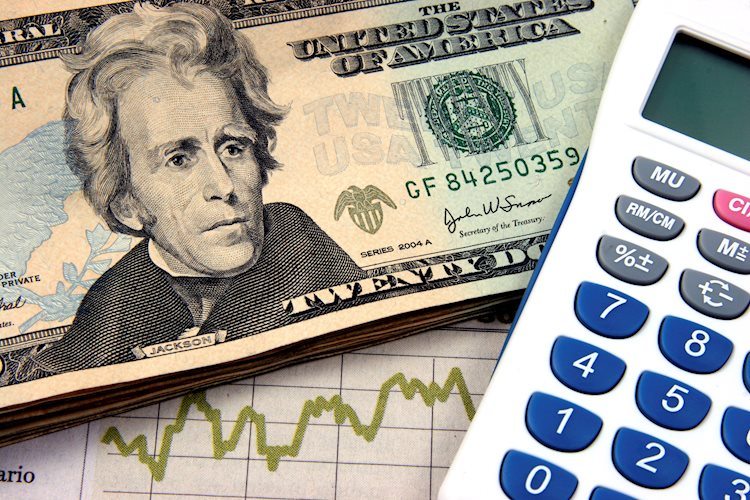
- US Dollar Index remains neutral on Tuesday near the key 103.00 level.
- Fed officials remain cautious about easing policy too much, too soon.
- CPI figures on Thursday will be key for DXY movement.
The US Dollar Index (DXY), which measures the value of the USD against a basket of six currencies, remains flat on Tuesday. Despite the initial surge, the DXY has settled around 102.50 and is awaiting further direction.
Economic indicators suggest mixed signals for the US economy. While some data points to a slowdown, other metrics indicate ongoing resilience. The Federal Reserve (Fed) has emphasized that its approach to monetary policy easing will be guided by incoming economic data, suggesting a cautious stance that will depend on the evolving economic landscape.
Daily digest market movers: US Dollar flat as Fed bets adjust, CPI looms
- Fed officials remain cautious, emphasizing the risks of premature easing and indicating further gradual rate cuts may be appropriate.
- The probability of a 50 bps cut in November or December is now zero, and a 25 bps cut next month is only 90% priced in.
- Despite strong economic data, the market still anticipates 125 bps of total easing in the next 12 months.
- Consumer Price Index (CPI) data on Thursday might shake the USD dynamics and the next bets on the Fed.
DXY technical outlook: DXY paused in upward momentum, resistance caps upside
Technical analysis of the DXY index indicates a temporary pause in upward momentum after a recent winning streak. The Relative Strength Index (RSI) and Moving Average Convergence Divergence (MACD) indicators remain firmly in positive territory, suggesting potential for further gains. While the short-term outlook has improved, the overall bias remains bearish for the USD.
Key support levels rest at 102.30, 102.00 and 101.80, while resistance levels stand at 103.00, 103.50 and 104.00.
Inflation FAQs
Inflation measures the rise in the price of a representative basket of goods and services. Headline inflation is usually expressed as a percentage change on a month-on-month (MoM) and year-on-year (YoY) basis. Core inflation excludes more volatile elements such as food and fuel which can fluctuate because of geopolitical and seasonal factors. Core inflation is the figure economists focus on and is the level targeted by central banks, which are mandated to keep inflation at a manageable level, usually around 2%.
The Consumer Price Index (CPI) measures the change in prices of a basket of goods and services over a period of time. It is usually expressed as a percentage change on a month-on-month (MoM) and year-on-year (YoY) basis. Core CPI is the figure targeted by central banks as it excludes volatile food and fuel inputs. When Core CPI rises above 2% it usually results in higher interest rates and vice versa when it falls below 2%. Since higher interest rates are positive for a currency, higher inflation usually results in a stronger currency. The opposite is true when inflation falls.
Although it may seem counter-intuitive, high inflation in a country pushes up the value of its currency and vice versa for lower inflation. This is because the central bank will normally raise interest rates to combat the higher inflation, which attract more global capital inflows from investors looking for a lucrative place to park their money.
Formerly, Gold was the asset investors turned to in times of high inflation because it preserved its value, and whilst investors will often still buy Gold for its safe-haven properties in times of extreme market turmoil, this is not the case most of the time. This is because when inflation is high, central banks will put up interest rates to combat it. Higher interest rates are negative for Gold because they increase the opportunity-cost of holding Gold vis-a-vis an interest-bearing asset or placing the money in a cash deposit account. On the flipside, lower inflation tends to be positive for Gold as it brings interest rates down, making the bright metal a more viable investment alternative.



